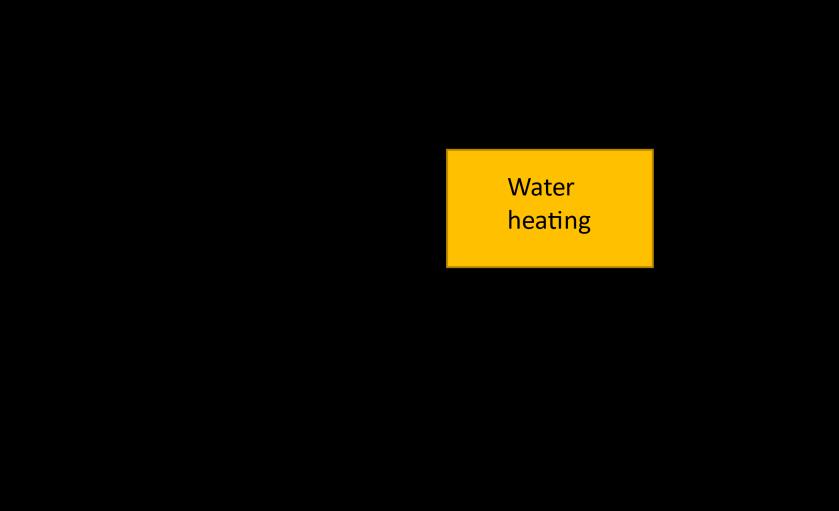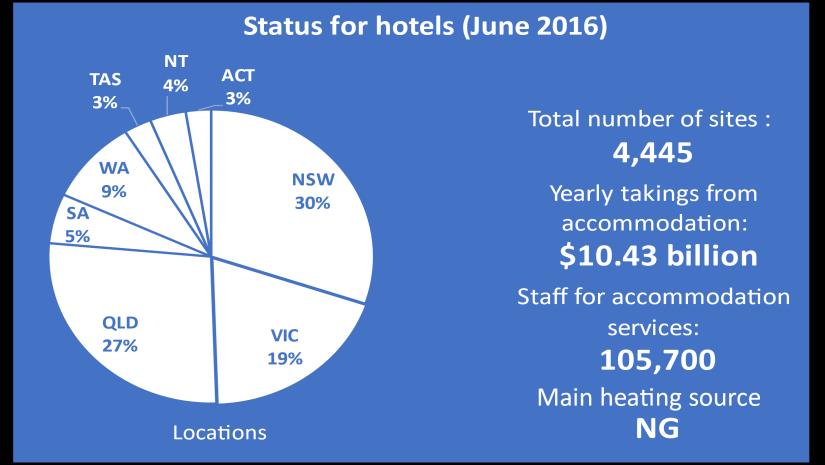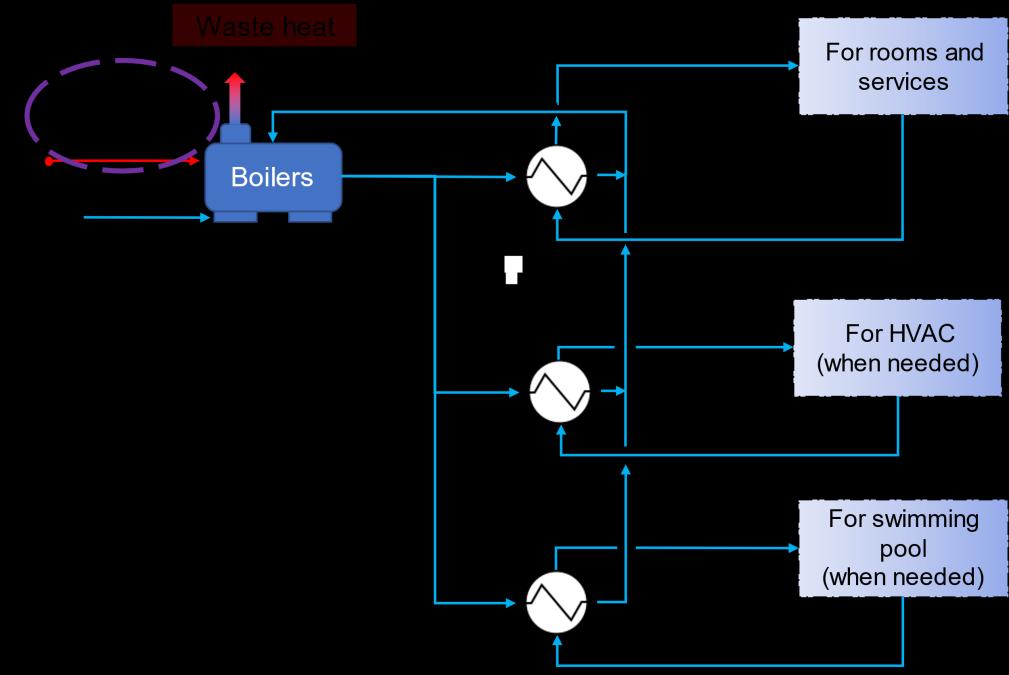
3 minute read
2.3.7 Heating in hotels
[113]. 24.8 °C is the highest yearly average cold water temperature in Australian climate zone 1 in [113]. Note that 4.2 kJ/°C of energy is needed to increase 1kg (≈1L) water temperature by 1 °C.
Figure 33. Relative temperature and energy intensity for residential aged care facilities
Advertisement
The Australian RAC residents’ water heating energy needs in a year is estimated as 0.45 PJ/year. 183,989 residents were in Australian RACs by the end of June 2020 (Table 2). The inlet cold water temperature 18 °C is the population weighted average temperature based on Table A6 in AS/NZS 4234 [113]. 365 days in a year are considered in the above calculation.
2.3.7 Heating in hotels
2.3.7.1 Background In this section, hotels are defined as accommodation facilities (excluding residential homes in the sharing economy, e.g. Airbnb). Figure 34 presents an overview status for hotels in Australia. There are over 4,400 hotels in Australia, generating 10.43 billion AUD for accommodation services. More than 105,000 people work in the sector to provide accommodation-related services. The ABS data [114] includes statistics from hotels, motels and serviced apartments with 15 or more rooms. Natural gas is a common heating energy source for hotels in Australia.

Figure 34. Status for hotels in Australia as at June 2016 [114, 115]
As summarised in Table 3, Australian hotels had 249,131 rooms and serviced more than 102 million guest nights in the financial year of 2015 to 2016. New South Wales, Queensland and Victoria have more than three quarters of all hotel rooms in Australia.
Table 3. Hotel summary statistics as at June 2016 (collated from[114])
Type:
Hotels (ANZSIC 4400)
Rooms Guests nights occupied Geographic locations
249,131 102,989,700 30% rooms in NSW; 27% rooms in QLD; 19% rooms in VIC; 9% rooms in WA; 5% rooms in SA; 4% rooms in NT; 3% rooms in TAS; 3% rooms in ACT;
The broader hospitality industry employs 105,700 people for accommodation services, while 745,400 people are employed for food and beverage services. Reference [115] includes hospitality industry statistics for hotels, cafés and restaurants.
2.3.7.2 Process description Depending on the needs and design, hotel heating systems can vary. Figure 35 is a typical hot water system for a hotel. Natural gas is a common energy source for a hotel water heating system. The hot water output can be used for room services, such as for bathtub, shower and tap hot water; hotel services, such as for kitchen and laundry services (not at a large scale); space heating, such as for heating in a central HVAC system; or for heating a swimming pool. For a small hotel, room and hotel services may be the focus of demand for centralised hot water, since space heating is typically provided by electric air conditioners. The swimming pool heating may not be needed as these smaller hotels often have no swimming pool or their pool is not heated.
The percentages of energy used for HVAC or swimming pools can vary significantly, mostly depending on the design of the swimming pools and HVAC, and the local climate conditions, including swimming pool sizes, outdoor or indoor pool, warm humid climate or cold dry climate, etc.

Figure 35. A typical hotel hot water system process flow diagram
2.3.7.3 Opportunity in hotels For hotels, heating electrification opportunities exist for water heating for rooms and services, water heating for HVAC, water heating for swimming pools, and commercial kitchen cooking needs. In terms of providing hot water supply to hotel guests, the upper band energy intensity for 1 guest per day is





